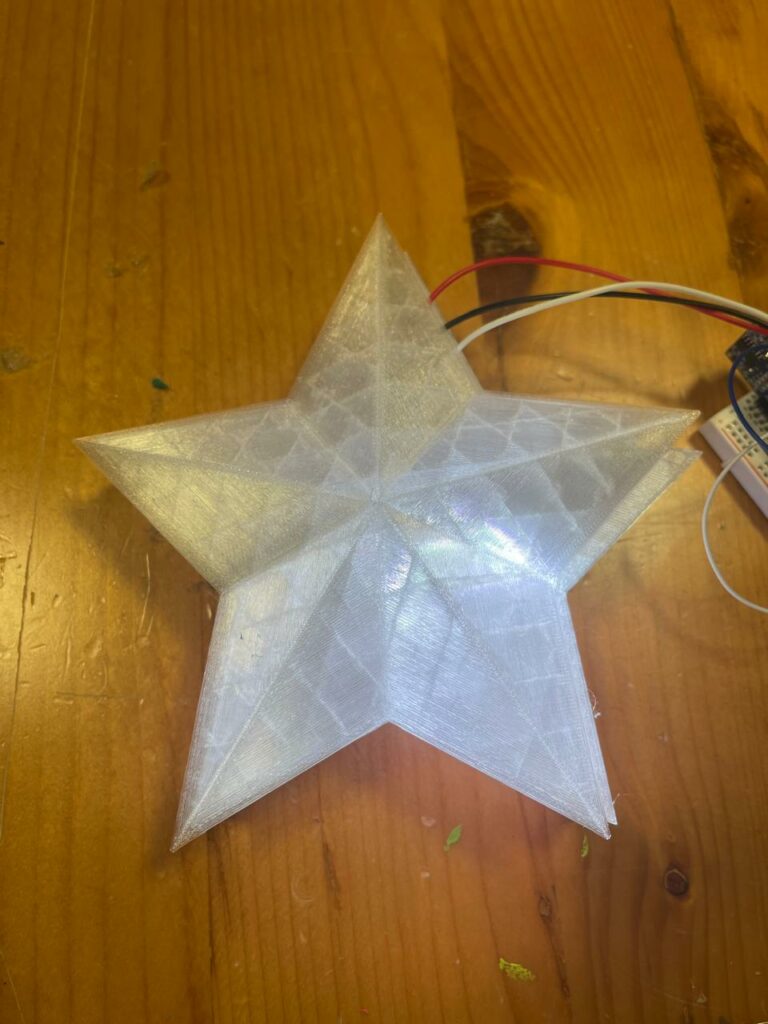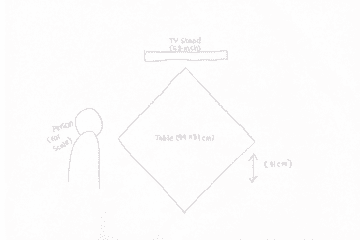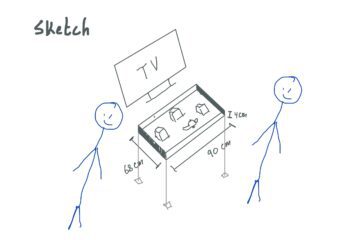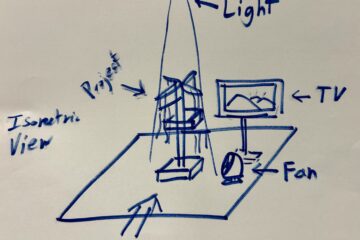So far, we made great progress on the StarFall project and have completed steps that helped us move closer to bringing our project to life. Below, we’ve provided a clear breakdown of the things we achieved:
3D-Printed Stars:
We completed three 3D-printed stars using transparent PLA filament. Each star consists of a top and base, which makes them both functional and visually appealing. These stars were tested with NeoPixels inside to ensure the light diffuses effectively through the transparent material, creating the glowing effect we desired.
3D-printed stars created using transparent PLA filament, consisting of a hollow base and top.
Feather Boards with Ultrasonic Sensors and NeoPixel Rings:
We successfully programmed the Feather boards to interact with the ultrasonic sensors and NeoPixel rings. The sensors detect movement, and the rings respond by lighting up, demonstrating the interactive functionality we envisioned. This was a key step, as it establishes the foundation for how the stars will react to user presence and movement.
Feather board and ultrasonic sensor setup connected to a NeoPixel ring. The first image shows the initial assembly and the second image captures the NeoPixel ring lit up.
Fine-Tuning Sensor Sensitivity:
We dedicated some time to working with the ultrasonic sensors, carefully adjusting them to ensure they could detect distances accurately and consistently. This step was especially important because the sensors play a critical role in creating a responsive and engaging interaction for the StarFall project.
NeoPixel Strip Testing and Soldering:
The NeoPixel strips were carefully prepared for use in the project. This week, we focused on soldering the connections to ensure they were secure and functional. While we haven’t fully tested the strips yet, the soldering process was done with attention to detail, making sure all joints were clean and strong. This step is an important part of getting the strips ready to be integrated into the larger design. Once testing begins, the soldered strips will respond to the code commands as planned.
This photo captures one of the NeoPixel strips after being successfully soldered.
Plans for This Week
Implementing Code on NeoPixel Strips:
We will transfer the code we developed for the NeoPixel rings to the strips. This will involve testing and adjusting the code to ensure the strips light up correctly and respond to interactions as planned.
Integrating Speakers:
We will start working with the speakers provided by the professor. The speakers will add an audio element to the installation, enhancing the overall experience. We will test different sound options to find the best match for the glowing stars.
Connecting the Stars:
While the three stars we have now work independently, our next step is to connect them. This will involve wiring them together and ensuring they synchronize properly. Once we achieve this, we will begin creating more stars until the full constellation of 13 stars is complete.
This week is focused on bringing all the individual elements together, adding more stars, and testing the audio component. This will move us closer to creating a fully interactive and immersive experience with StarFall.










